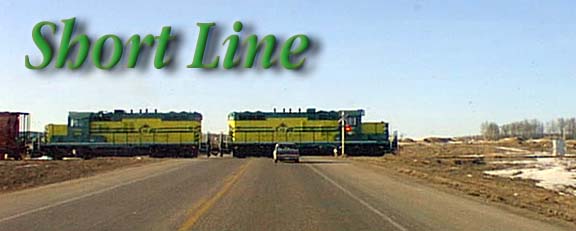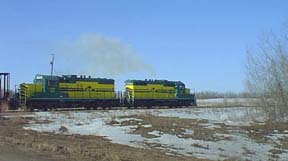
The idea here is to make use of the existing road beds and provide grain handling along these lines that are about to be abandoned. The reasons given by the large railroad companies is that these lines are no longer economically viable and it is in their best interest to close them down. It is puzzling to understand how, with the infrastructure and efficiency that is suppose to accompany big operations that a short line railroad could ever be a break even proposition. The only possible explanation is that if the profitability of the large companies is being reduced by union wages and maintaining high levels of serviceability and safety. A small company might operate without union level wages to its operators and cut a few corners on maintenance, however both of these sound iffy a best and hardly seem like the way to build the future of a business.
With these doubts and questions in mind I made some inquiries and the story from CN is that they would prefer to operate the long haul business but would like to divest themselves of the nuisance of running the branch lines. Though this sounds a little odd it is a plausible story. Carlton Trail Railroad is owned by Hudson Bay Railroad that operates short line railroads in Manitoba up from Gillam to the Pas and in turn both companies are owned by Omnitrak a large short line rail operator located in Denver Colorado. The operators on Carlton are paid by the mile at a rate of $25 an hour and are members of the Brotherhood of Railway Engineers.

Carlton is able to operate somewhat cheaper then CN because it only has an Engine man and Conductor on each train eliminating one position that is found on a CN train. Another lowered cost are the power units. Omnitrak went to a locomotive bone yard and purchased two hundred scrapped machines and from those reassembled about fifty working units. This means that the locomotives are lower in cost and they have a supply of used, but spare parts, to keep their equipment running.
My source reported that there is money to be made on short line railroads, not a lot, but they can be run profitably and at the same time they continue to feed the traffic to CN and CP which improves their profitability Just as inland terminals concentrate the loads into a single place the time lost in switching and going from location to location to make up a train is reduced, thus increasing their overall efficiency. So it would appear that the short line and inland terminals are both a drive to reduce the numbers of workers downward thus reducing the wages paid by both the railroads and the grain companies.